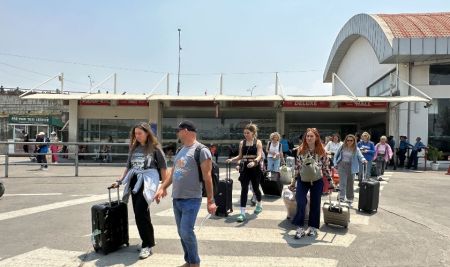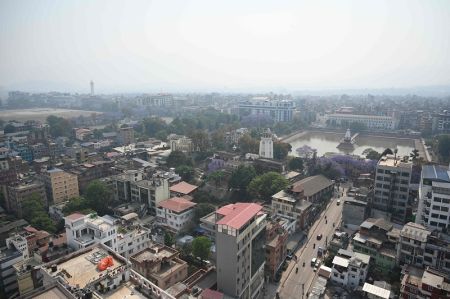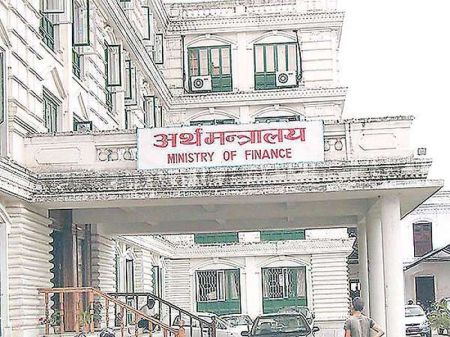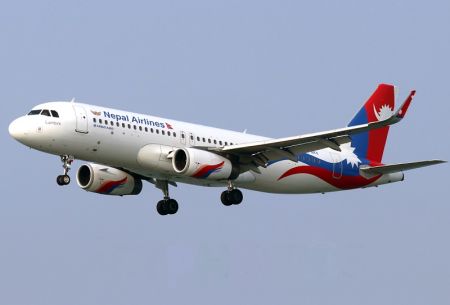--By Purushottam Ojha
The trade statistics published by the Trade and Export Promotion Center (TEPC) for the last 11 months of the fiscal year 2012-13 shows a dismal picture as the increment in export trade was only 1.9 percent while imports increased by 22.7 percent in comparison. The import-export ratio has reached an all time high of 1:8, heading faster towards a situation of unsustainable growth of trade deficit. Each time the trade statistics get published, frowning expressions from all quarters signal the plunge of the Nepalese economy – a patient only resuscitated by the inflow of remittances as artificial breathing.
There is much hype about the products and services of the Nepal Trade Integration Strategy 2010 on their potential contribution to the growth of Nepalese exports and employment of a generation in the country. The impact of these products as envisaged, however, is yet to be realized, much to the chagrin of the people engaged in the production of the supposedly potential-bearing agro-forest products. Development of products along the value chain has not received adequate attention in the past three years as there was no proper match between resource allocation and the priority set by the government in its periodic plan.
In the absence of strategic measures for export promotion, trade with big neighboring countries shows poor performances as imports from India and PR China during the last FY 2012-13 increased by 24.8 and 33.3 percent respectively, while exports to India increased by 0.4 percent only. There was substantial increment in export to China in percentage terms (137 percent) but the amount of export in absolute terms is minimal (1.99 billion rupees), much less than Nepalese export to Bangladesh. Thus, there are no complementarities on doing trade with trading partners near or far.
One of the choices for enhancing intra-regional trade and achieving the goal of economic integration is the pursuit of transit and transport facilitation, which could push up the process of export development. The growing trade deficit for Nepal on one side obviates the need of enhancing the supply side capacity while enhancing transport connectivity at the regional or sub-regional level, which is critical in building export trade at the other.
Transit and transport connectivity has been a touted affair in the discourse of international, regional or sub-regional trade. South Asian Free Trade Area (SAFTA) includes the facilitation of transport and transit as one of the measures of enhancing intra-regional trade and investment (SAFTA Article-VIII). The regional multi-modal transport study carried in 2006-07 under the SAARC framework has identified a number of roads, railways, inland waterways, ports and airports facilities to be developed and improved for increasing physical connectivity within the South Asian nations. However, there is little progress in removing the physical and non-physical barriers impeding the operation of identified trade corridors. The South Asian sub-region comprising of Nepal, the North-Eastern States of India, Bhutan and Bangladesh, which came into existence during the late nineties, also make a pitch for a corridor concept for achieving the objectives of sub-regional integration of trade and economy.
Legitimate concerns
It is well experienced that South Asian countries are rather mired in the mess of bilateral political relations which often undermines the economic rational of bringing the region or sub-region under a single economic bloc. The negotiations on trade, investment and transit mostly become prey to a perceived notion of threat to security, revenue loss, rising unemployment and threat of cross border terrorism. Thus, a very cautious approach is pursued by participating member countries in such negotiations. The diplomatic engagements among nations are carried under the haze of mistrust, suspicion, and fear although big promises are made in the regional forums. Hence, a big gap exists between promises and delivery. The SAARC leaders have promised a decade ago to make South Asia an economic union by 2020 but the SAFTA implementation s still groping around a bunch of sensitive lists, let alone the development of seamless transport connectivity within the region. Thus the possibilities of achieving integration on services, investment and flow of capital are remote if current practices, cultures and ecology of negotiations are continued.
.jpg)
Learn from others
There are some success stories that South Asia can learn from for enhancing transport cooperation within member countries. One such example is the implementation of the corridor concept at the sub-regional level in the Greater Mekong Sub-region (GMS) in South-East Asia, regional cooperation on Central Asian Regional Economic Cooperation (CAREC) and the Southern African Development Community (SADC). The Greater Mekong Sub-region (GMS) that includes ASEAN member countries of Cambodia, Laos, Myanmar, Thailand and Vietnam along with the Yunnan and Guangxi province of China, has entered into the process of sub-regional economic cooperation with support from the Asian Development Bank since 1992, with a view to enhance economic relations between the countries. Various projects have been implemented by this economic bloc particularly in the areas of transport, energy, telecommunications, environment, agriculture, tourism and trade, among others. One of the success stories of GMS countries is the transport corridors that link member countries particularly from road and rail transportation. The cross-border transport agreement (CBTA) signed on 1998, has remained an important instrument for facilitating transit traffic and enhancing connectivity between GMS member countries.
Another sub-regional cooperation program is Central Asian Regional Economic Cooperation (CAREC) which comprises 10 countries in central Asia with a long term vision of good neighbour relations and prospects. This program intends to help neighboring countries realize their potential by promoting regional cooperation in the priority areas of transport, trade facilitation, energy and trade. CAREC community has gone for developing a transport and trade facilitation strategy that aims at developing an efficient transport network that will integrate the CAREC region internally and the rest of the world.
Similarly, the Southern African Development Community (SADC) which comprises of 15 South African countries aims at enabling regional integration and sustainable development under the framework of the SADC treaty signed on August 1992. The SADC community recognizes the transport and communication links as regional and global character with profound implications in the improvement of the quality of life of people and for enhancing social interaction among people in the region. Some of the important initiatives that SADC countries have taken are: the development and liberalization of regional air service, cooperation on marine transport, improvements of port infrastructure and port operations. The development of road and railway infrastructures and increasing inter-modal competition on provision of services are some important steps taken by the Southern African development community.
Moving forward
Some basic lessons that can be learnt from the initiatives taken by these economic blocs towards regional/sub-regional integration may be as follows:
First, there should be a focus on creating a viable integrated transport service by linking individual components of the transport chain for maintaining high performance standards and consistent levels of efficiency and reliability. Emphasis should be given on creating complementarities and cooperation between modes, modal choice optimisation, seaport-hinterland optimisation and development of multi-modal service provisions among member countries.
Second, the development of road infrastructure should follow the harmonisation of technical standards, harmonisation of road user charging system, regional funding mechanism for infrastructural development, harmonisation of road safety standards, third party insurance and regulatory mechanism (e.g. single permit, carrier registration, quota and capacity management, fee and documentation, joint route management committee, driving license, passenger and cargo manifest, fitness of vehicles, training and testing of drivers and crew, visa facilitation etc.). Similarly, there should be a plan for uniform application of accident and restoration management among member countries. Road traffic information system should be devised and implemented in order to facilitate and regulate the cross border movement of road traffic.
Third, there should be a focus on establishing and facilitating the provision of a seamless, efficient, predictable, cost effective, safe and environment friendly railway service which is responsive to market needs and provides access to major centers of population and activity. There should be a harmonised regional railway policy in terms of economic and institutional restructuring of railways and also by expanding the capacity of the governments to provide a definitive policy framework, develop supportive regulatory and investor friendly legislation and monitor compliance with such policies and regulations.
Similarly, efforts should be made to develop an integrated regional network of railway corridor that will adopt common safety rules and regulations with regard to railway signals, signs and rolling stocks, standardisation of accident investigation procedures, common standards of customer’s service, promoting data information exchange, establishing communication links, training of technical staffs and establishment of railway route management committee, among others.
Fourth, the cross border transport agreement should be negotiated and concluded at the regional or sub-regional level. The development of physical infrastructure and establishment of logistical systems, trans-shipment and transfer of cargo from one mode of transportation to another, upgrading of transport equipments, necessary institutional infrastructures (e.g. setting up a Multi-modal Corridor Planning Committees, comprising of public and private sector stakeholders) should be envisaged in such agreements.
.jpg)
The facilitation of transit and transport basically rests on three essentials; documents, bonds and the seal. The efficiency of the transit movement is determined by how effectively these are streamlined during implementation. Use of harmonized documents that are acceptable to all transit customs territory, lodging and processing of the documents on IT enabled environment, use of blanket guarantee system by the transporter in lieu of repeated requirement of bonds would help in reducing the volume of paperwork. Use of upgraded multi-axle vehicle, improvement in the road infrastructures and railway tracks, designating dedicated freight corridors and operation of scheduled cargo train across the corridors, application of risk management systems are some of the initiatives to be pursued for bringing efficiency in transport movement. Meanwhile, member countries should consider designating a central point of contact in each country for facilitating the cross border transport. There should be a discussion forum of the service providers for resolving any issues related to movement of cargo and freight vehicles.
Enhancing complementarities on trade and transit is not just a matter of removing physical and non-physical barriers in transport. Rather, it demands for change in the mindset of the partnering countries to work collectively for improving the quality of life of the common people through economic integration. The desire for systemic improvement in the trading system and creating an environment of mutual trust and confidence are sin qua non for negotiating a workable cross border transport agreement in South Asia.
(Ojha is former secretary at Ministry of Commerce and Supplies.)





















